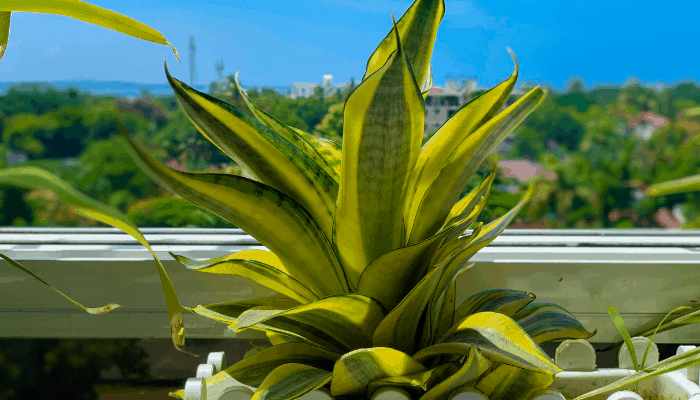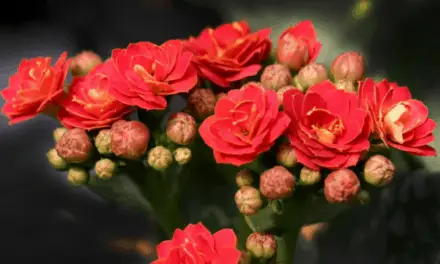Yes, you definitely can plant a snake plant with another indoor plant, as long as all plants involved share similar needs for water, light, and temperature.
Table of Contents
How To Plant A Snake Plant With Another Type Of Houseplant

When planting any two different types of houseplants inside of the same container, you need to ensure that they have very similar light, water, and temperature requirements.
For example, you wouldn’t want to put a snake plant in with an African violet plant.
The African violet will require a lot of water while the snake plant will require very little – so these two plants would not be compatible and would not thrive together.
Snake plants are very hardy and adaptable. They can thrive in a variety of light conditions and only require watering about once every week and a half to two weeks.
There are many other types of plants, such as fittonia, pothos, hoya, or something like a parlor palm, which have similar light and water requirements to snake plants and could quite easily live together under the same environmental conditions.
The biggest problem you are likely to run into when planting a snake plant with another type of plant will take place below the soil’s surface.
If you are planting a snake plant with one or more types of other plants, you will want to consider the snake plant’s aggressive root structure.
Watch Out For The Snake Plant’s Aggressive Roots
A snake plant’s roots do not extend down very deep and instead spread outward, sometimes close to the surface of the soil.
This can cause a problem for any plant you put in there with it.
The roots of the snake plant could possibly suffocate any plant you choose to live with it.
Separate The Plants Inside Of A Larger Container
It’s a good idea to separate the plants into their own pots before putting them together into a larger container.
It’s most likely the snake plant that will need the most space inside of the larger container.
So, a good way to combine the plants is to start out with a deep, heavy pot, at least 6-8 inches in diameter, and plant the snake plant directly inside of that large pot.
Next, keep the plants you are adding inside of their own separate small pots and add them to the larger pot with the snake plant.
You can then use a decorative mulch, such as sheet moss to cover over and conceal the separate pots.
Keeping the plants separated in different pots will also allow you to water them to their own specific needs.
But you will still need to choose plants that have similar light and temperature needs.
You can combine a snake plant with many other types of plants to make a beautiful arrangement for your home.
For example, if you add a snake plant with two or three smaller fittonia plants, it makes a lovely bushy arrangement with the snake plant extending above.
Choose Your Location Wisely
Snake plants do better in bright, indirect light-filled spaces and won’t tolerate a lot of direct sunlight.
They also grow well (but slower) in shaded corners and other areas of lower light within your home.
Keep your new snake plant arrangement in a fairly warm spot with temperatures staying above 50°F and keep it away from drafty windows.
If a snake plant catches a cold draught, it can cause the leaves to brown and begin shriveling up.
Conclusion
If you choose plants to live with your snake plant that have similar light, water, and temperature needs, and you provide that environment for your snake plant arrangement, you’ll have no problem planting your snake plant with other plants and creating an environment for all of them to thrive.




